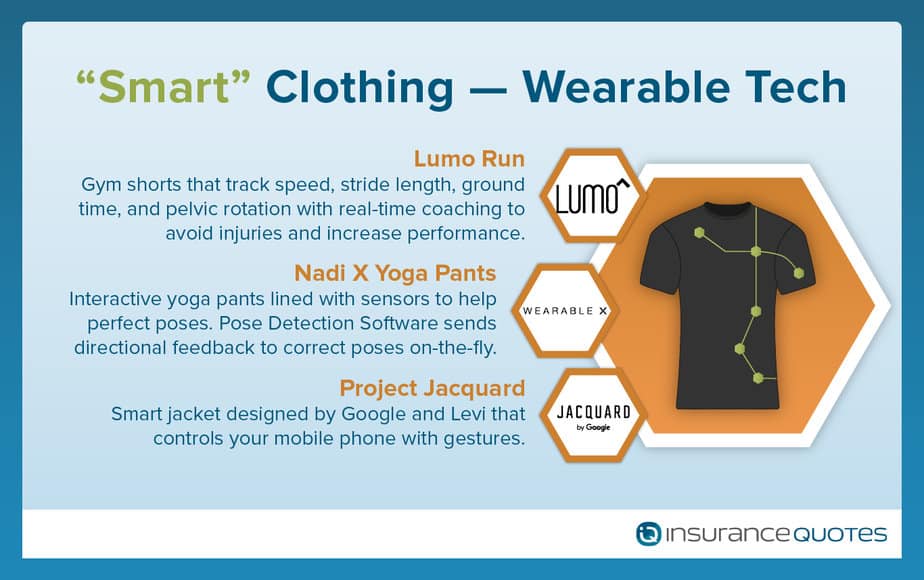Wearable Tech: The Future of Your Health (and Health Insurance)
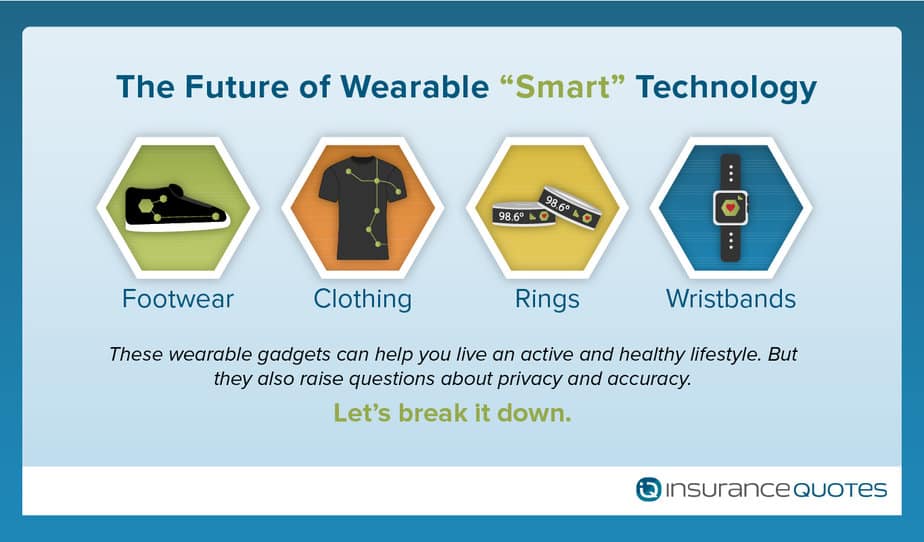
When it comes to fitness trackers, wristbands are so last year.
Sure, the Apple Smartwatch, Garmin and Fitbit remain top sellers. But the future of wearable technology includes smart shorts that track your daily runs, interconnected yoga pants that correct your posture and navigational shoes that guide the blind.
All of this “tracking” has insurance companies taking notice.
UnitedHealthcare, for example, will reimburse Fitbit users as much as $1,500 each year, depending on how much they walk. The money can be used toward out-of-pocket medical expenses, such as copays and deductibles. Aetna, meanwhile, intends to discount the price of buying an Apple smartwatch for some of its customers.
By encouraging people to live healthy lifestyles, the insurers reason they will save money in the long run. According to a study sponsored by Fitbit, companies can save as much as $1,300 for each employee who wears one of their fitness trackers.
While these wearable gadgets encourage you to live an active and healthy lifestyle, they also raise questions about privacy and accuracy.
It’s a brave new world for wearable technology, so let insuranceQuotes break it down for you. If the product already is on the market, we’ve provided the cost.
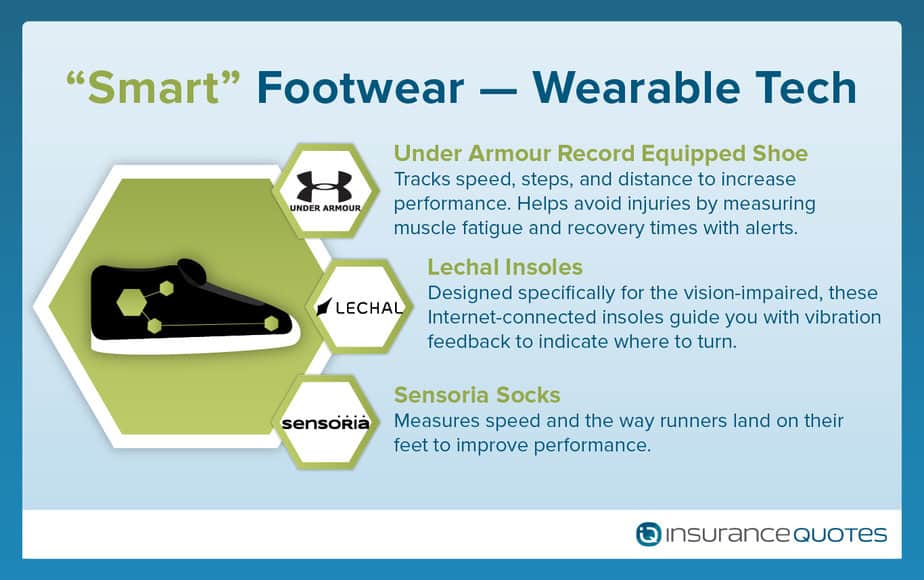
Smart footwear
Under Armour Record Equipped Shoes. ($140-$160) These smart shoes are backed by Olympian Michael Phelps and help runners track their speed, steps and distance.
“Footwear is a crucial performance weapon for runners, and what we at Under Armour have placed at the forefront of our innovation pipeline,” says Kevin Haley, president of innovation at Under Armour.
Under Armour says the shoes will also help athletes avoid injuries by measuring muscle fatigue and recovery time, and warning them when to take it easy.
“We are taking a scientific approach to recovery that is directly utilizing real-time data from your body to determine what level of workout you should execute to guide your training,” says Mike Lee, chief digital officer at Under Armour. “We know one of the biggest problems runners face is pushing through pain and fatigue, leading to injury.”
Lechal insoles. ($150) Who needs a guide dog when you have a pair of Internet-connected shoe inserts to lead the way? Lechal’s smart navigation insoles slide into your shoes and vibrate to tell you where to turn. The insoles are made for the blind, but they also help people who don’t want to stare at their phone for directions. They also track steps, distance and calories.
Sensoria socks. ($199) These smart socks help runners improve their performance by measuring not only their speed, but how they are landing on their feet.
Smart clothes
Lumo Run. ($99) These gym shorts help runners track their speed, stride length, ground time and pelvic rotation. The real-time coaching helps runners not only improve performance and avoid injuries.
Athos Core. ($696) These interactive clothes help athletes track muscle activity, heart rate, breathing, calories and the amount of time they spend exercising compared to resting. The compression shirt tracks the upper-body muscles − the biceps, triceps and pecs. While the compression shorts track the quads and hamstrings.
Under Armour’s Athlete Recovery Sleepwear. ($180-$200) These Tom Brady-inspired pajamas help athletes track their sleep and get a good night’s rest using far infrared. Under Armour claims the pajamas will help athletes recover more quickly, so they are ready to go for the big game. The idea was conceived by the New England Patriots quarterback.
Wearable Experiments’ Nadi X yoga pants. These interactive yoga pants are lined with sensors to help perfect your pose.
“We use pose detection software that determines what is correct and incorrect,” Wearable Experiments designer Billie Whitehouse told The BBC. “This is communicated back to the person wearing the pants with directional feedback, indicating which way to rotate the hip, knee or ankle to do the correct alignment.”
Om Bra. ($169) This interactive sports bra helps women measure their heart rate, breathing, speed, time and distance when they go out for a run.
“Women gravitate towards wearables, but they don’t want an item they have to put on or worry about every day,” OMsignal chief marketing officer Shaz Khang told USA Today. “If they’re going to be wearing it all day, they want to get more information.”
Project Jacquard. Google and Levi are teaming up on a soon-to-be-released smart jacket, which features interactive threads that connect to your phone and detect hand gestures. Make phone calls, listen to music and get directions without touching your phone.
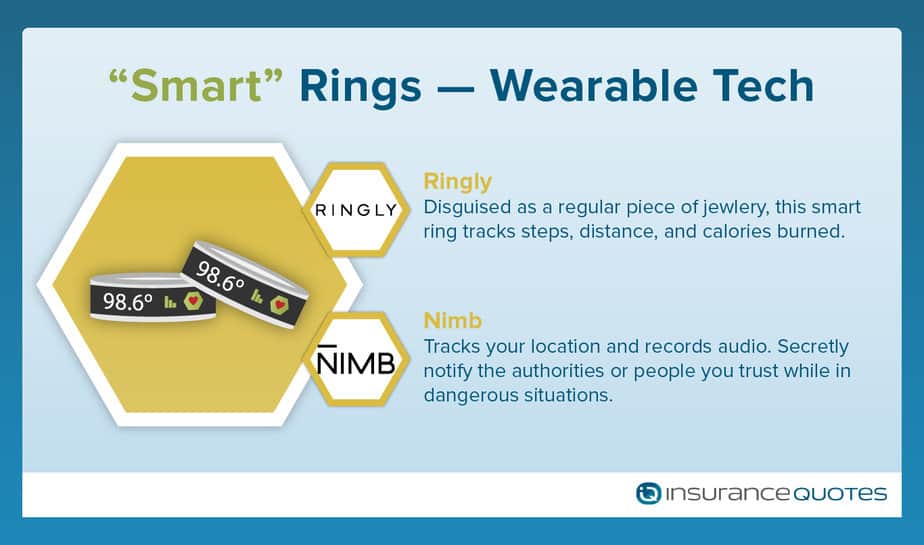
Smart rings
Ringly. ($195) This ring is disguised as a regular piece of jewelry, but it tracks your steps, distance and calories burned.
Nimb. ($149) Help is on the way. If you’re ever in danger, the ring secretly alerts the police and people you trust. The ring records audio and tracks your location to help them find you. Nimb is available for pre-order.
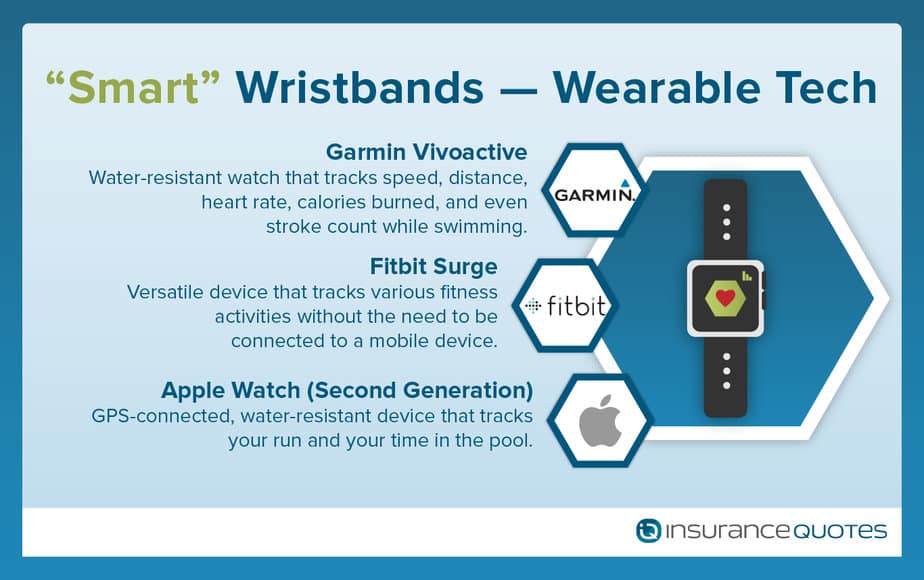
Smart wristbands
Apple’s second-generation smartwatch. ($269-$1,049) This watch is a popular choice for athletes with a sense of style. The GPS-connected device will track your run, while swimmers will appreciate that the water-resistant watch can be worn not only in the pool, but also in salt water.
The smartwatch also monitors your heart rate and measures calories burned. But concerns have been raised about the watch’s battery life, particularly when the GPS is activated.
Garmin Vivoactive. ($200) An all-around sports watch that is popular with runners, cyclists, swimmers and even golfers, the Garmin Vivoactive tracks your speed, distance, heart rate and the number of calories burned. In the pool, the water-resistant watch will also track your stroke count.
Fitbit Surge. ($250) Like Garmin, this device is s a versatile fitness tracker designed with athletes in mind. As most fitness trackers do, the Surge monitors your heart rate, steps, distance, location and calories, but it also offers a wide array of sports modes. For runners, it tracks your speed and maps your route without the need to carry a clunky phone in your pocket or on your arm.
For cyclists, it measures your speed, distance and how high you’ve climbed during the ride. The Surge is also water-resistant and can be used by swimmers.
Fitbit Charge 2. ($130) Geared toward the more casual users who want a fitness tracker to help them maintain a healthy lifestyle, the Fitbit Charge 2 does not need the advanced metrics that top-notch athletes crave. The Charge 2 monitors your heart rate, breathing and sleep.
Whether you’re taking a walk or going for a run, the Charge 2 will measure your steps and distance. But this fitness tracker does not offer GPS tracking, so it will not map your runs, and the distance may not be calculated as accurately as with the Surge. And it’s not water resistant, so swimmers should look elsewhere.
If you are thinking about investing in health apps and technology, you should check with your health insurance provider to see if they offer discounts on premiums when using these devices.
